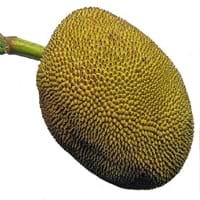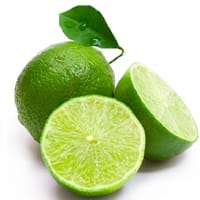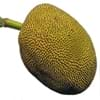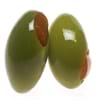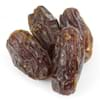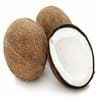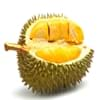Health Benefits
Cancer prevention, Heart care, Prevents constipation, Regulation of heart rate, Treatment of colonic diseases
Arthritis treatment, Cholera treatment, Gout treatment, Heart care, Piles treatment, Scurvy treatment
General Benefits
Controls blood pressure, Cures cough, Digestive aid, Flu treatment, Improves eye vision, Treatment of common cold
Cures fever, Digestive aid, Eye care, Maintains healthy cholesterol level, Treatment of common cold
Skin Benefits
Brightens and lightens complexion, Reduces wrinkles
Anti-aging benefits, Skin rejuvenation, Treatment of acne, Treatment of dark spots
Hair Benefits
Promotes longer and healthier hair, Regulates hair growth
Promotes longer and healthier hair, Treatment of dandruff
Allergy Symptoms
Abdominal cramps, Diarrhea, Skin Rashes, Swelling of mouth, tongue or lips, Vomiting
Breathing difficulty, Coughing, Eye irritation, Hives, Inflammation, Nasal congestion, Runny nose, Skin rash, Wheezing
Side Effects
Allergic reaction, Coagulation
Chances of sunburn
Pregnant Women
Not Available
Yes
Best Time to Eat
Along with meal, As a snack in the late afternoon, Don't consume at night and before bed, Eat the fresh ones, avoid mixing with any other foods, don't eat after meal., Morning time (before lunch)
Along with meal, Best to drink warm water with lime on an empty stomach, Don't consume at night and before bed
Vitamin B5 (Pantothenic Acid)
Vitamin C (Ascorbic Acid)
Vitamin K (Phyllochinone)
Not Available
Calories in Fresh Fruit with Peel
Not Available
Not Available
Calories in Fresh Fruit without Peel
Calories in Frozen Form
Not Available
Calories in Dried Form
Not Available
Type
Tree fruit, Tropical
Citrus, Tree fruit
Season
Autumn, Monsoon, Summer
All seasons
Varieties
Black Gold, Cheena, Cochin, Dang Rasimi, Golden Nugget and Golden Pillow
Key lime, Persian lime, Kaffir lime, Desert lime, Palestine Sweet Lime, Mexican Sweet Lime, Mary Ellen Sweet Lime
Color
Dark green, Golden yellow, Green, Indigo, Magenta, Yellowish-orange
Green
Inside Color
Yellow
Light Green
Texture
Fibrous
Succulent
Soil Type
Clay loam, Porous, Sandy, Well-drained
Clay loam, Sandy loam
Climatic Conditions
Humid, Warm
Sunny, Warm to hot climate
Facts about
- There are up to 500 seeds in Jackfruit & these seeds are edible.
- Root extracts of Jackfruit tree is used to treat diarrhea, fever and asthma.
- The taste of jackfruit is combination of mango, banana, melon and papaya.
- Lime is the called as the powerhouse of flavors.
- Fresh lime juice is so acidic that it can dissolve concrete.
- Limes are more fragrant and acidic than lemons.
- Persian limes are almost seedless and thorn less.
Other Countries
Bangladesh, Indonesia, Nepal, Thailand
Argentina, Brazil, India, Mexico
Top Importer
United States of America
United States of America
Top Exporter
India
Mexico
Botanical Name
Artocarpus heterophyllus
Citrus aurantifolia
Synonym
Artocarpus heterophylla or Artocarpus integra or Artocarpus integrifolia
not available
Subkingdom
Tracheobionta
Tracheobionta
Division
Magnoliophyta
Magnoliophyta
Class
Magnoliopsida
Magnoliopsida
Subclass
Alismidae
Rosidae
Species
A. heterophyllus
C. aurantifolia
Generic Group
Not Available
Citrus fruit
Difference Between Jackfruit and Lime
We might think that Jackfruit and Lime are similar with respect to nutritional value and health benefits. But the nutrient content of both fruits is different. Jackfruit and Lime Facts such as their taste, shape, color, and size are also distinct. The difference between Jackfruit and Lime is explained here.
The amount of calories in 100 gm of fresh Jackfruit and Lime with peel is Not Available and Not Available and the amount of calories without peel is 95.00 kcal and 30.00 kcal respectively. Thus, Jackfruit and Lime belong to High Calorie Fruits and Low Calorie Fruits category.These fruits might or might not differ with respect to their scientific classification. The order of Jackfruit and Lime is Rosales and Sapindales respectively. Jackfruit belongs to Moraceae family and Lime belongs to Rutaceae family. Jackfruit belongs to Artocarpus genus of A. heterophyllus species and Lime belongs to Citrus genus of C. aurantifolia species. Beings plants, both fruits belong to Plantae Kingdom.
